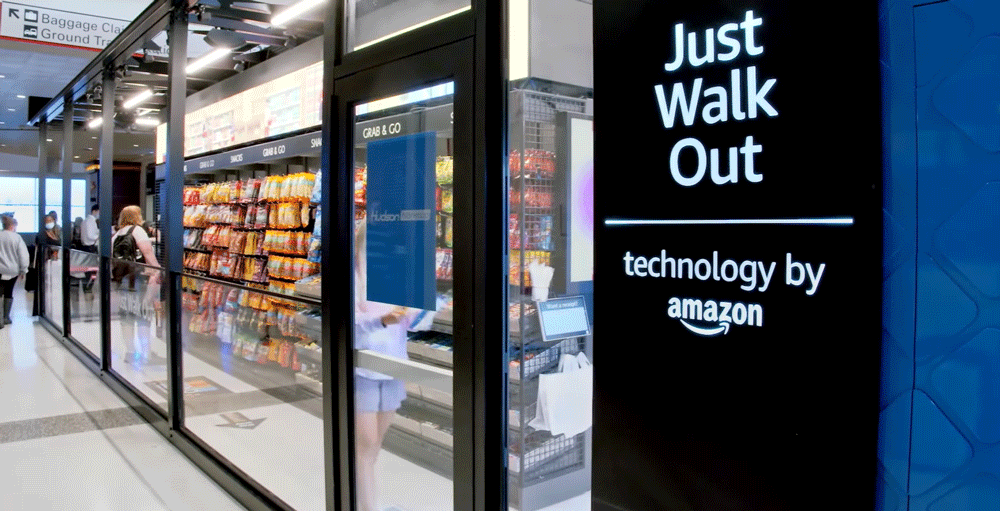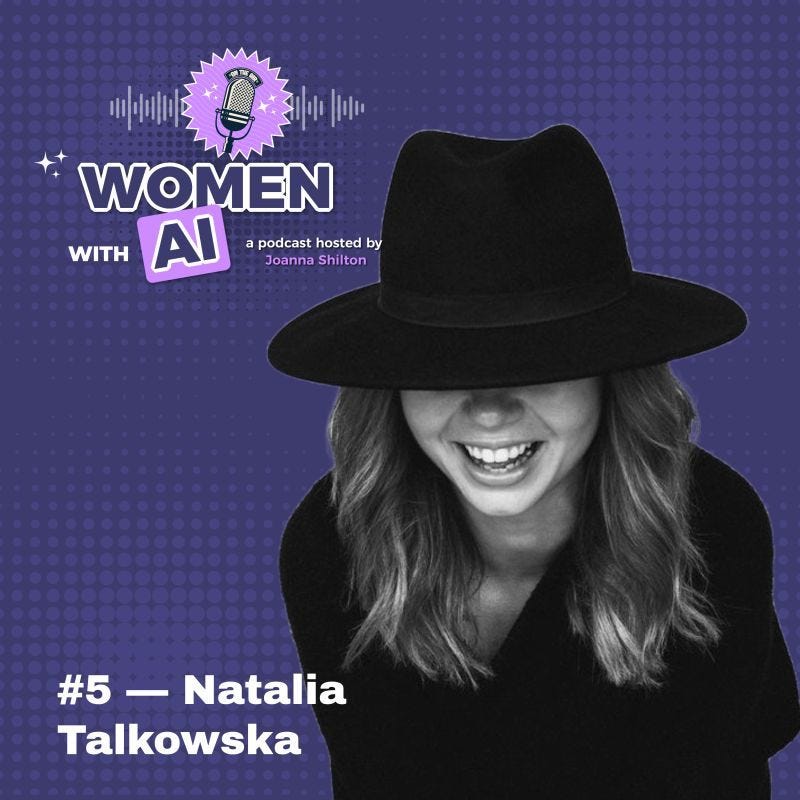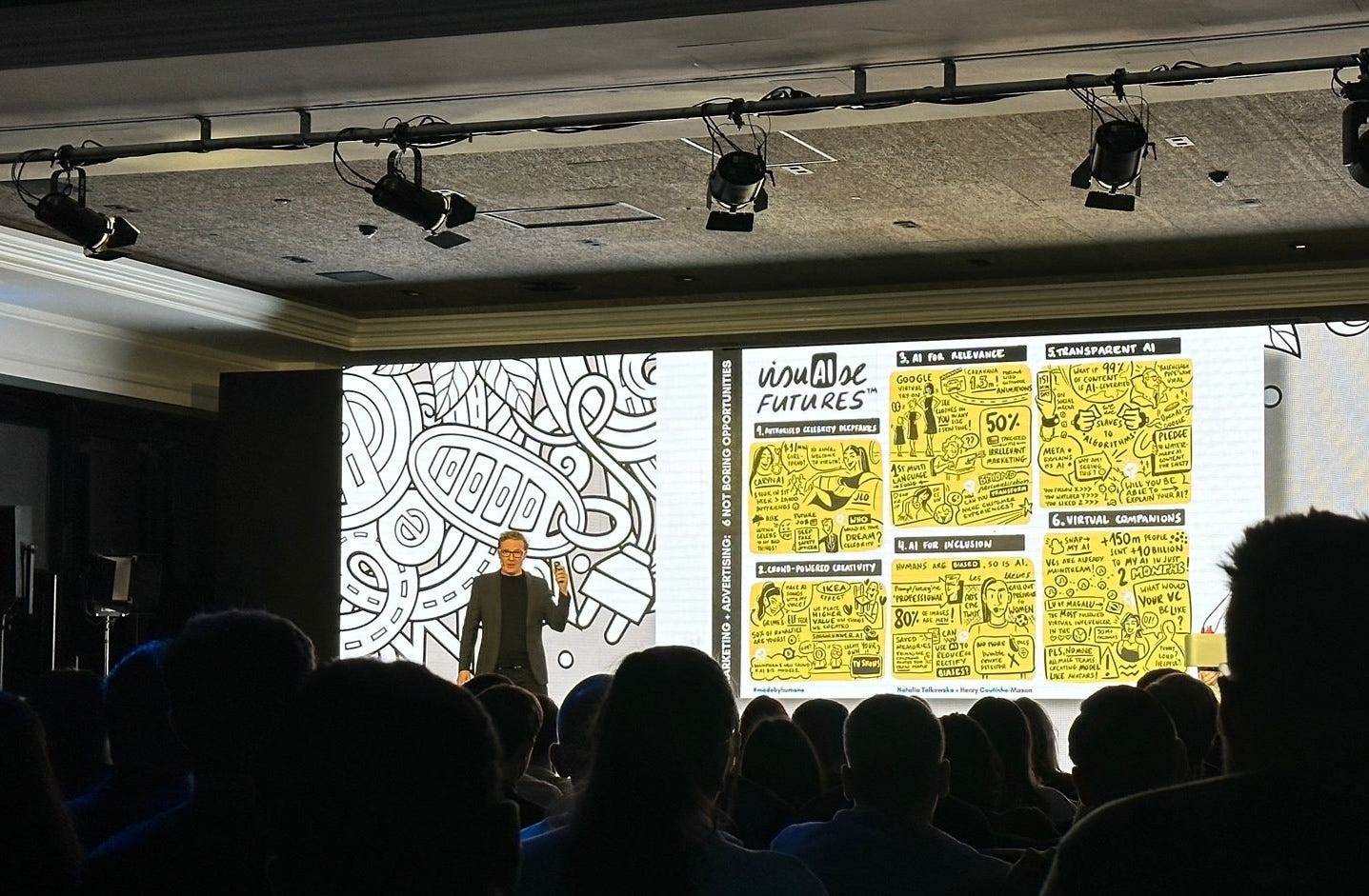Each week we go beyond the headlines and explore what AI will mean – for people, for businesses, the future of work, learning and culture, and more.
Use these examples to ask better questions about “where next?”, and why putting people’s needs at the heart of your AI strategy will be the key to success.
This week, learn from:
Amazon Just Walk Out – and the need to find the ‘right time, right place’ for AI
Happy Cashier – and why AI will make the future of work “Less, But Better”
Inqwire – and the inevitable opportunities to zig, while others zag.
🛒 Amazon Just Walk Out – and the need to find the ‘right time, right place’ for AI
My LinkedIn post about Amazon’s misrepresentation of its Just Walk Out technology hit a nerve – seeing over 80 comments (which is itself an interesting datapoint that highlights the widespread skepticism towards big tech and AI in general).
As well as the angry comments, there were also a bunch of thoughtful comments explaining why this level of human intervention less of a big deal than the original stories suggested. When it works, social media works :)
On top of this, this piece from Forrester added some important extra context:
Amazon is still investing in Just Walk Out (JWO) and, in fact, is “pushing hard,” particularly in the smaller formats where the solution has proven viable. Jenkins told me that there will be more stores launching JWO in 2024 than ever before and that four opened just last week (one at a stadium in Ireland, as an example, and another at Wrigley Field in Chicago). Today, more than 130 stores globally have JWO technology …
JWO makes sense if a store is particularly profitable, which airport convenience stores and sports stadiums are (think about the markup you pay for water bottles or snacks at those locations) …The claims that JWO requires a lot of human intervention (including estimates of 1,000 employees in India manually labeling transactions) had “no factual basis.” Jenkins said that small-format stores, especially where planograms were largely identical, required little to no human intervention.
My take – the completely unsurprising ‘secret’ (!) to creating the future normal is finding the sweet spot where new technology can practically and profitably serve unmet customer needs. Who knew?! 😱
And using AI to automate a small airport or sports stadium outlet makes total sense:
The primary customer need is convenience (so making it significantly easier and faster to buy will mean many more people grab a bottle of water or snack)
The range is very limited (the task is less complex)
The prices are high (the business’ tolerance for errors is higher)
In contrast automating a big store – where people spend tens of minutes filling their shopping carts with hundreds of items – won’t materially change their behaviour or expectations.
Use this story as a powerful reminder:
AI is just a tool.
AI is just a tool.
AI is just a tool.
Eventually, AI may well become cheap enough and powerful enough and ubiquitous enough to be everywhere. But right now, it isn’t. Which means you have to make decisions about where to use it first.
💡 There’s no definitive ‘right’ or ‘wrong’ place to use AI. The question to ask is whether AI can enable you to change people’s behaviour and serve needs that are currently unmet?
Natalia on Women in AI
Natalia dives into the backstory and plans for VisuAIse Futures, including how we are bringing it together with her Doodleledo creative experiences to give teams a personal and collective a-ha moment with AI.
Note: We’ve been testing these AI-powered doodle workshops and it’s the most excited we’ve seen people get about a team exercise in a long time. Get in touch if you want to know more. 😇
👩🏽💻 Happy Cashier and why AI will make the future of work “Less, But Better”
Soon after the Amazon story broke the post above went viral on Twitter. It’s an amazing story because it’s so weirdly dystopian, and yet it also feels so possible.
But don’t worry, this won’t be a big part of our future normal.
The best way to think about the future of customer experience in the AI era is as a spectrum – with seamless automation at one end, and a deeply human experience at the other.1
And that’s the problem with this innovation – it falls painfully in the middle. It’s not automated enough, but it’s also not human enough.
Imagine how you feel leaving that store. Even if you’ve had a great experience (and on Twitter, the poster says the cashier was more polite and better than most human cashiers in NYC!), it’s not human enough to be truly satisfying. It just leaves you with a slightly painful glimpse into the realities of global capitalism.
A far better vision of the future normal comes from Steve Ells, the founder of Chipotle, who is now launching Kernel, a robot-powered fast food restaurant concept in New York. The robots reduce costs – but his vision isn’t of a completely automated restaurant. Instead, he says:
“We’ve taken a lot of human interaction out of the process to leave just enough“
What this ends up as is a restaurant where each outlet only requires 3 employees. Which means they can be paid higher wages, which will reduce the high turnover that's a huge problem for the restaurant industry. Which in turn will mean higher quality, more experienced staff that can deliver a better customer experience.
It’s a brilliant framing, because it speaks to a far more inspiring future normal of work that is “less, but better’, i.e. can you have less workers, but with better jobs and higher wages?
And it should prompt you to ask:
💡 Which bits of human interaction can you remove from your processes? Which bits can be automated?
💡 But most importantly, what does just enough human interaction look like for your business?
💞 Inqwire and the inevitable opportunities to zig, while others zag.
Finally, I suspect we’ll see a LOT more of this in the coming years.
Just as with Amazon’s pivot, there are a whole bunch of use cases where rejecting AI makes sense – whether because of the product category, or to appeal to a certain type of customer.
Done well, generative AI can create moments of magic. But it can also waste people’s time, make mistakes, and destroy an experience and therefore your brand.
There will be great AI-native businesses built in the coming years, but there will still be great human-powered business opportunities – just as Spotify’s algorithms don’t peacefully with vinyl’s resurgence.
💡 Remember: the new rarely completely ‘kills’ the old, despite what headlines claim.
About VisuAIse Futures
VisuAIse Futures is a graphic collaboration between 👩🎨 Natalia Talkowska and 🕵🏻♂️ Henry Coutinho-Mason – two curious humans with 20+ years collective experience of helping large organisations navigate change.
We love helping companies increase the reach and impact of their thinking, so if you want to bring us to run a workshop at your next AI event or meeting, and co-create a custom graphic for your organisation – then let’s chat!
A few upcoming sessions & events:
AI:CX, Brazil - 23 April
Future Hospitality Summit, Saudi Arabia - 30 April
Climate Impact Summit, London - 7-8 May
GenAI4Pharma, London - 14 May
Cannes Lions, France - 17-21 June
Knowledge Transfer Partnership, Bournemouth - 20 June
“Inspiring, energetic, and entertaining. Henry's session for 2,000 senior executives from a Fortune 100 healthcare company received the highest rating from the attendees.” Brent Turner, Head of Strategy, Opus Events
“Natalia's fusion of AI storytelling and creativity foresight was so compelling that she remained the most talked-about speaker months after the event, underscoring the lasting impact of her insights." - Stephen Fletcher, Leaders Club CEO
Note: that’s not to say the humans delivering high-touch experiences won’t be supercharged by AI. They will! But that the customer experience is designed to be a profoundly human one.









